Victrinia Ensor
Omono
There are a variety of ways to graft new or different foliage onto trees. This particular example is shimpaku to Rocky Mountain Juniper, and was a project last weekend at the garden. The RMJ is a large one which was collected a couple years ago. But like many large junipers, it needs some foliage brought in closer to the main body of the trunk, because there are long stretches of empty space. Also, here in the damp NW, RMJ can be susceptible to twig blight. Though it is not uncommon or greatly difficult to deal with/prevent, taking off the native foliage takes care of that issue.
Eric is showing the two places on the tree where the grafts will be made.
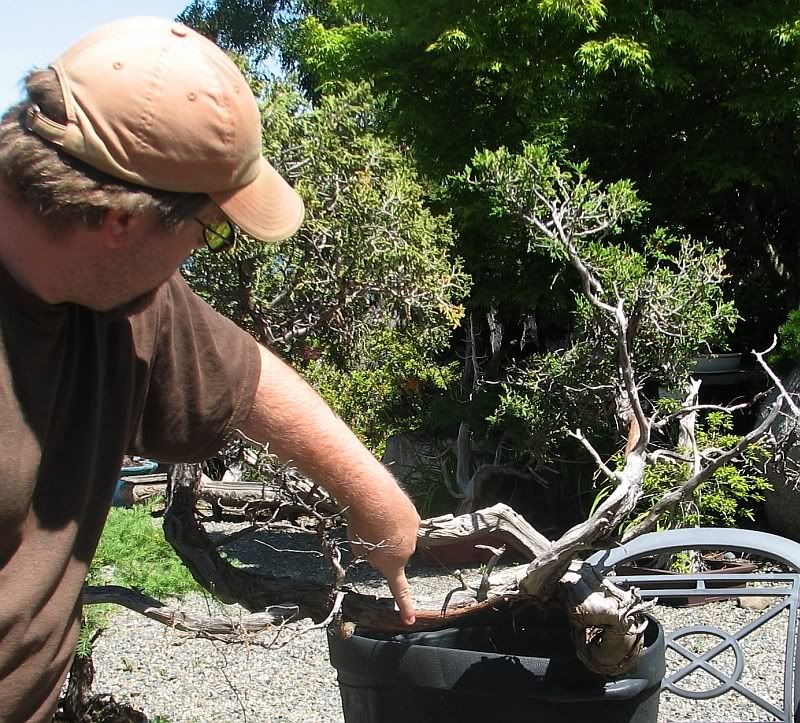
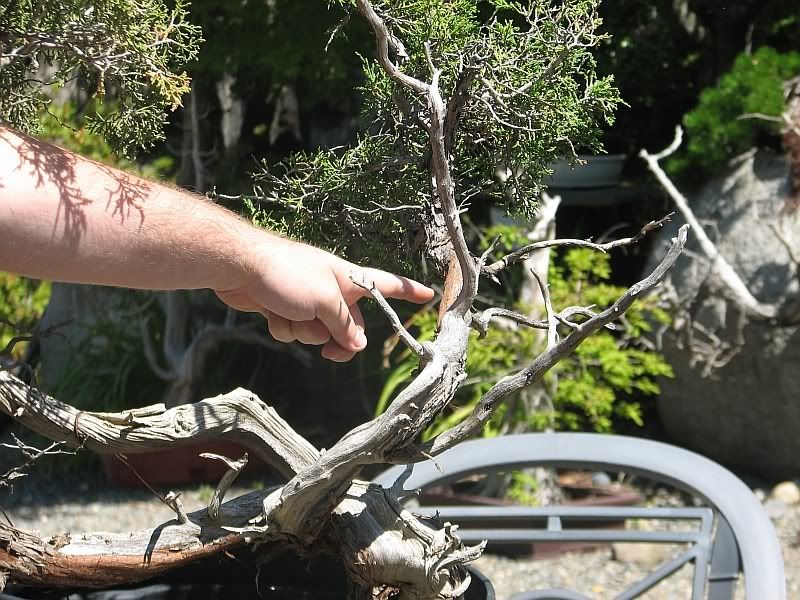
The guys settled a shimpaku plant into the pot with the RMJ. It can often be easier to use a whip in a 4 inch pot, but this was the tree which would suit the need and had strong whips that could reach where he wanted to go. It also ensures that the foliage is all from the same source, and therefore will have the same texture and growing habit.

Using a “Ninja” carving bit Eric acquired from Dale Cochoy, Daniel cut a very clean channel in the live vein. This can be easier said than done, as one has to take into consideration the size of the whip relative to the channel you are cutting. You need to have a good close fit. Daniel commented that it was tricky, as this particular bit cuts through trees like butter.

The whip had a section of bark sliced off to fit the length of the channel. You can see it was taken all the way down to the sapwood.
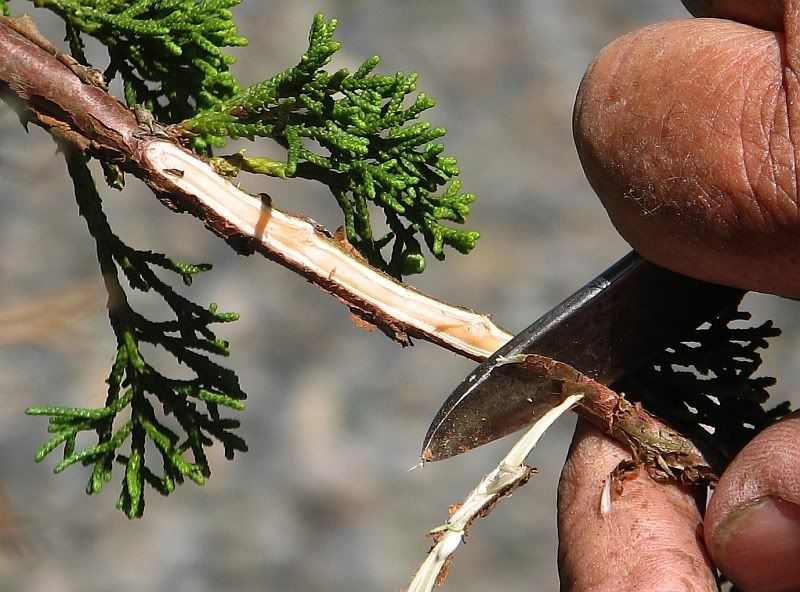
The whip is nestled into the channel.
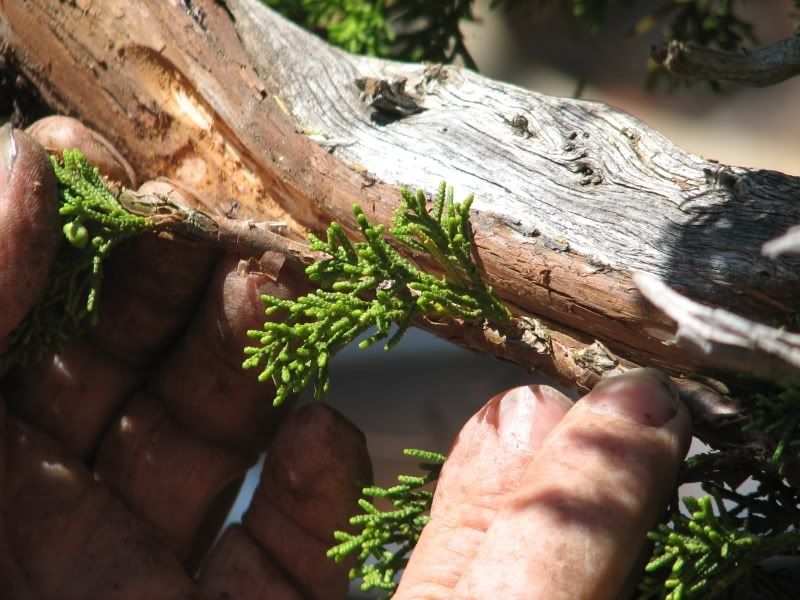
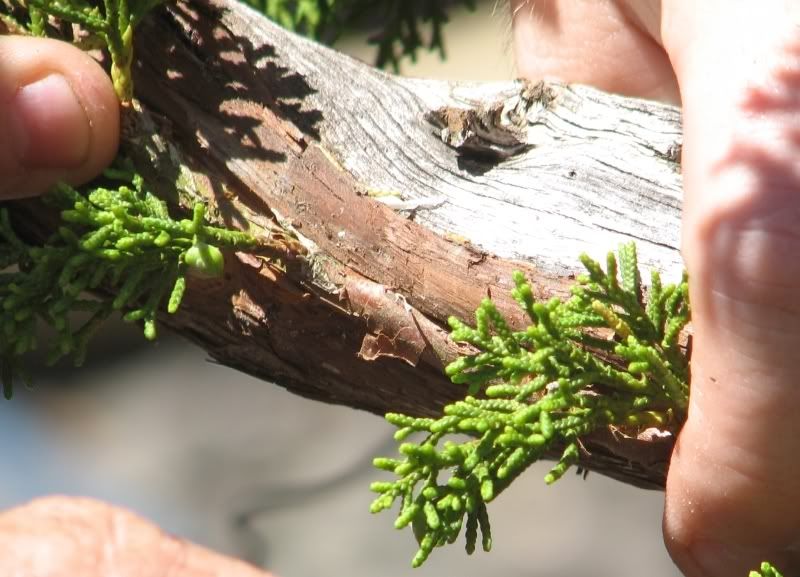
Electric tape was used to secure the whip tightly to the tree. Grafting tape among other things is also used.

Here are the two areas after the grafting was finished.
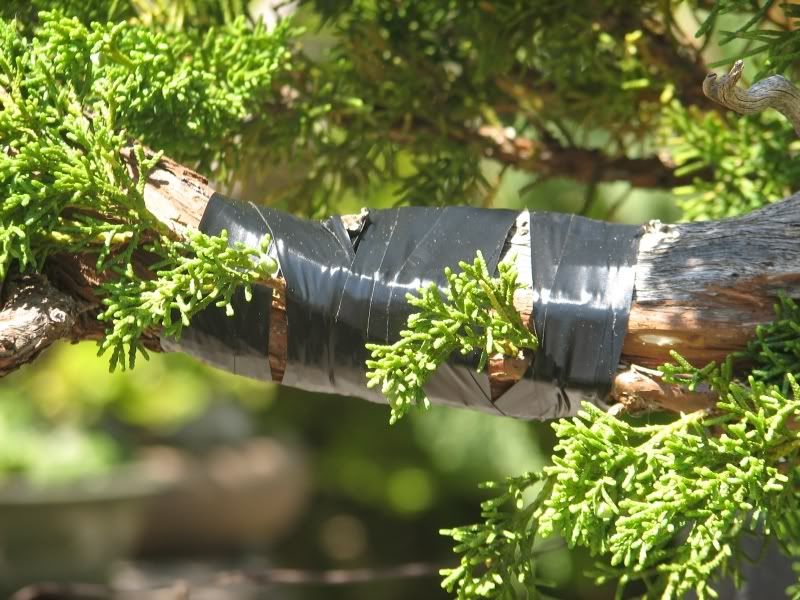
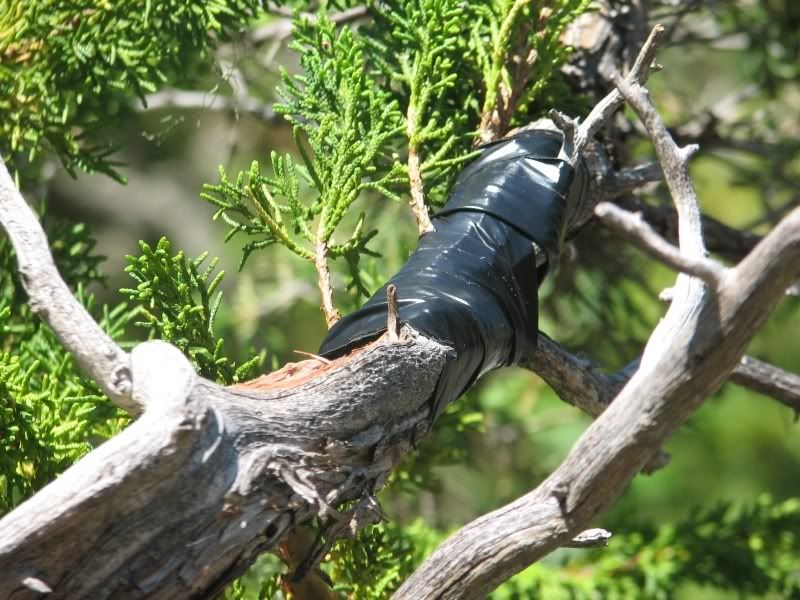
This tree will now be left alone for as long as it takes for the graft to hold. Daniel will likely girdle the whips next year (if they show strong signs of growth). This will force the nutrients trying to get back to the shimpaku roots to route into the RJM without stopping the uptake of water that comes from the shimpaku, which will help the graft to strengthen.
Victrinia Ridgeway
Eric is showing the two places on the tree where the grafts will be made.


The guys settled a shimpaku plant into the pot with the RMJ. It can often be easier to use a whip in a 4 inch pot, but this was the tree which would suit the need and had strong whips that could reach where he wanted to go. It also ensures that the foliage is all from the same source, and therefore will have the same texture and growing habit.

Using a “Ninja” carving bit Eric acquired from Dale Cochoy, Daniel cut a very clean channel in the live vein. This can be easier said than done, as one has to take into consideration the size of the whip relative to the channel you are cutting. You need to have a good close fit. Daniel commented that it was tricky, as this particular bit cuts through trees like butter.

The whip had a section of bark sliced off to fit the length of the channel. You can see it was taken all the way down to the sapwood.

The whip is nestled into the channel.


Electric tape was used to secure the whip tightly to the tree. Grafting tape among other things is also used.

Here are the two areas after the grafting was finished.


This tree will now be left alone for as long as it takes for the graft to hold. Daniel will likely girdle the whips next year (if they show strong signs of growth). This will force the nutrients trying to get back to the shimpaku roots to route into the RJM without stopping the uptake of water that comes from the shimpaku, which will help the graft to strengthen.
Victrinia Ridgeway
